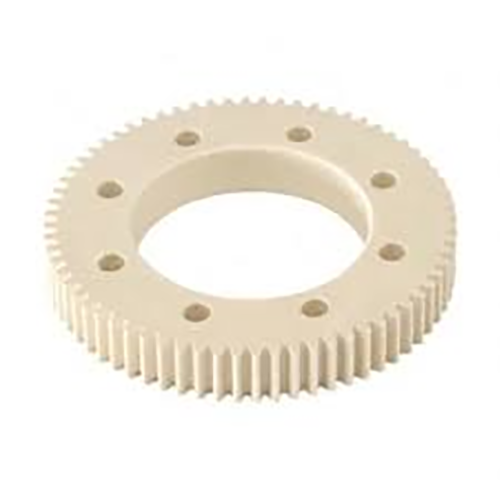
Delivering appointed top-layer smoothness for a manufactured item proves indispensable.
- Technical drawings lay out precise surface criteria for components
- These callouts often use terms like "Ra," which stands for arithmetic mean deviation to quantify the surface roughness
- Familiarity with surface callouts is vital for achieving performance targets
- Specified roughness affects lubricant distribution, frictional performance, and durability
- Understanding the notation correctly yields the desired surface result
Defining Precision in CNC Machining

CNC machining is a transformative approach within manufacturing through G-code driven routines the hardware sculpts intricate parts accurately.
- Automated machining allows fabrication of accurate parts from multiple materials
- Broad CNC applicability benefits industries like aerospace, automotive, and healthcare
- G-code driven machining maintains reliable consistency across batches
Across prototyping through full-scale production CNC machining serves as a cornerstone in contemporary manufacturing
CNC Specification Guidance
Reading machine specs may appear overwhelming initially
Though a little background plus organization helps you interpret technical details effectively
Set out by finding key metrics: spindle speed, feed settings, positional accuracy, work envelope, controller
All these values combine to influence overall operational ability.
Example: increased spindle revolutions aid soft materials; accelerated feed raises production.
Seeing these associations aids in selecting the correct machine for your use
Remember to consult the manufacturer's literature thoroughly.
Vendor literature commonly contains useful guidance and explains terms
CNC Machinery: An Exhaustive Guide
Automated CNC platforms are computer-commanded systems for precision manufacturing of multiple materials They operate by interpreting digital instructions called G-code to control cutting tools or other actuators.
- Some types of CNC machines include milling machines lathes routers and plasma cutters
- Production processes accommodate metal alloys, plastics, woods, and composite materials
- Additionally CNC gear supports fast prototyping and limited production for entrepreneurs and institutes
CNC Fundamentals and Principles
They exemplify the union of precise mechanics and modern control software Multifunctional systems use programming logic to fabricate both simple pieces and composite assemblies Essential concept transposes digital designs into manufactured reality.
- Software-driven machining
- Code-driven production workflow
It entails finely timed actuator motions governed by software Skilled staff determine cutting conditions, observe operations, and verify finished part quality.
Influence of Finish on CNC Operations
Delivering planned surface condition during machining is necessary It impacts both functional performance and surface look Material selection, cutting strategy, and finishing steps all influence final texture.
A polished finish improves wear resistance whereas coarse texture can hinder performance Automated machining presents a spectrum of techniques and tools to accomplish desired finishes.
- Consider using alternative cutting shapes |coated inserts|tool speed tuning to deliver finish
- Also surface treatments such as grinding and polishing can refine textures
Seeing how process parameters map to surface output is key for optimal finishes.
Understanding CNC Machines: A Beginner's Guide
This precise method uses computer-guided machinery to sculpt components from diverse substrates They interpret digital toolpaths to carve detailed designs reliably Knowing programming basics and tool selection secures better machining outcomes
Use cases cover aerospace, automotive, medical, electronics, and more sectors From aircraft parts to precision plastic molds, CNC creates complex high-quality items
Surface Finish Notation for Machined Components
Appropriate surface specification is essential during CNC part production It guarantees the finished part fulfills functional and visual criteria Technical callouts frequently employ Ra as the roughness metric The value, shown in µm or inches, quantifies mean surface irregularity height.
Evaluate both finish smoothness targets and the operational application before specifying

In many cases fine finishes are necessary for accurate alignment and tight interfaces
Rugged finishes sometimes serve parts that need enhanced traction or grip
Insert concise surface notes in blueprints to articulate finish expectations Provide the roughness average and detail supplemental processes or treatments needed.
Note that precise surface specifications contribute directly to production success
CNC Equipment Types and Use Cases
Machine shops deploy varied CNC equipment tailored to many distinct production tasks They integrate CAD-driven toolpaths to guide cutters for precise component production.
- Milling centers craft intricate contours cavities and surfaces by subtractive cutting
- Lathes excel at producing round parts such as shafts rods and bushings
- Waterjet tools cut ceramics composites and metals with no heat-affected zone
Pick machines based on material compatibility, feature detail, and dimensional demands Machine-specific strengths enable applications in fields ranging from aerospace to automotive engineering.
Reaching Optimal Surface Quality Using CNC
Realizing premium surface texture is vital and CNC machining supplies tools to accomplish it With exact feed control spindle tuning and proper tool shapes machinists influence finish quality and minimize defects Plus durable cutting materials and appropriate coolant control boost finish quality Strategic toolpath planning and precise machine adjustments result in superior finish quality.
Achieving Surface Finish in CNC Programming
Tuning code to influence finish plays a central role in meeting quality aims The chosen machining parameters including feed rate spindle speed and cutting tool geometry exert a significant influence on the final surface texture Thoughtful parameter choices coupled with correct lubrication help produce polished surfaces.
- Additionally routine tool checks and upkeep maintain consistent finish quality Continuous tool maintenance and oversight what is cnc preserve high finish consistency Also ongoing tool care and inspection support sustained finish reliability
- To optimize surface finish programmers should consider factors like material type desired surface roughness and the application requirements
- Toolpath simulation enables testing parameter impacts to cut down surface errors
- Plus regular inspection and maintenance of tools copyright finishing standards
